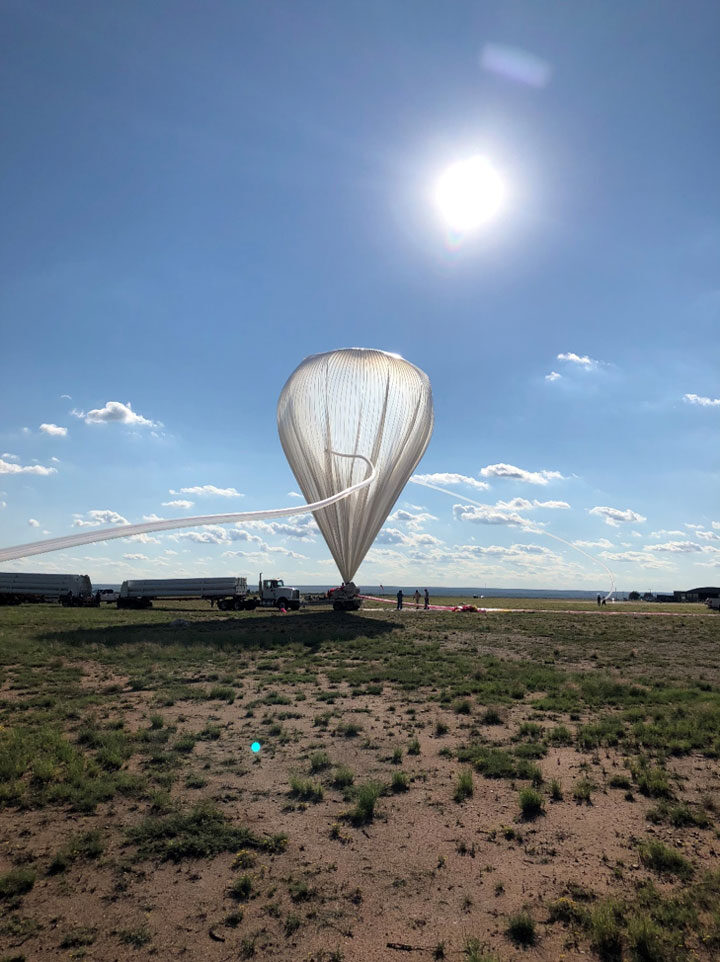


Well, now it’s next time. As the Balloon Program continues to gear up for its first launch of the Ft. Sumner Campaign, our science teams are diligently working towards getting their integrations completed so they can declare “Flight Ready.” What that really means is that they are working hard on making sure their payloads work! Once they’ve proven everything has been put together properly, we’ll attach them to the NASA equipment and then we’ll test everything again!
One of our upcoming science missions here is BITSE (that’s short for “Balloon-borne investigation of Temperature and Speed of Electrons in the corona”). In the words of one of the lead scientists, Dr. Jeff Newmark, “BITSE is a technology demonstration of a new chronograph—a new type of telescope to learn about the origin of solar winds.” That’s pretty impressive.
Above you can see a picture of BITSE taking advantage of the clear New Mexican skies and tracking the Sun. BITSE uses a special device to make its own personal eclipse so it can take very high resolution pictures of the Sun’s corona. Now, even though the team’s test worked, they’re still looking through all the air from here on the ground, which causes a degree of interference. Once they’ve launched, there will only be a trace amount of air at the experiment’s float altitude of 120,000 feet, so BITSE should get a very clear picture.
Once BITSE has flown on a balloon, the science team will take everything they learned to help us understand how the Sun makes solar winds, which also helps us understand how the Sun works. We’re really excited to support the team and their experiment. Keep checking back for more updates from the field here at Ft. Sumner. Thanks!

Did you know that NASA has a balloon program? At NASA, we not only launch balloons, we launch balloons that can carry almost 8,000 pounds to over 120,000 feet. That’s like taking two Ford Mustangs, fully loaded, and flying three times higher than a Boeing 777. When our balloons fly, they carry world class telescopes, cosmic ray detectors, and Earth science instruments. Many of NASA’s most successful satellites actually started out as balloon missions. I am always amazed when I realize how capable these platforms are.
The NASA balloon program conducts launches from the four corners of the world. Right now I’m in Ft. Sumner, New Mexico, the Land of Enchantment, where we’re gearing up for another campaign. Next, we’ll be taking flight over Antarctica. We also fly regularly from Wanaka, New Zealand and Esrange, Sweden. Keep checking back here for more updates! I’m going to put updates on our science missions, updates on life in the field, and more information on how we conduct our launches!
Until next time, I’ve attached a picture from last year’s Ft. Sumner Campaign, taken by yours truly, to help give a sense of scale for our balloons.